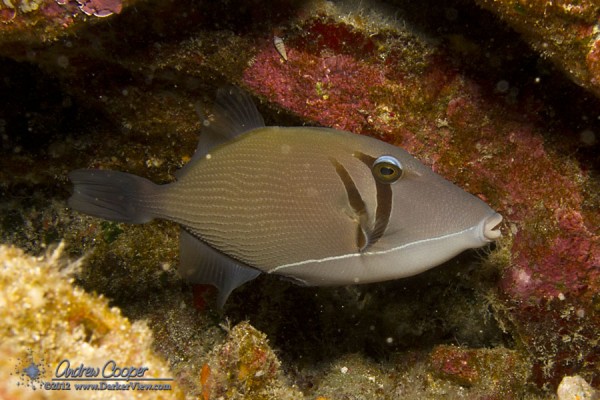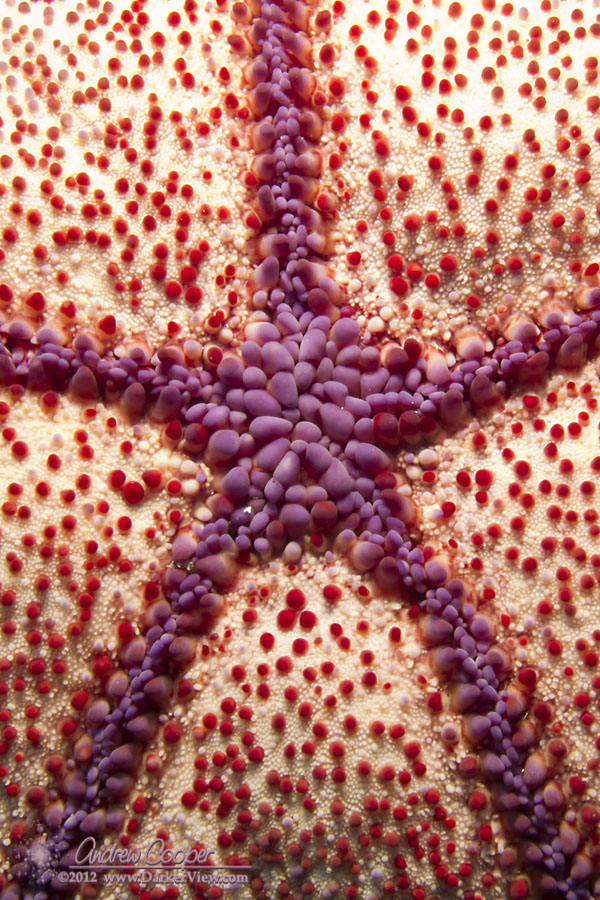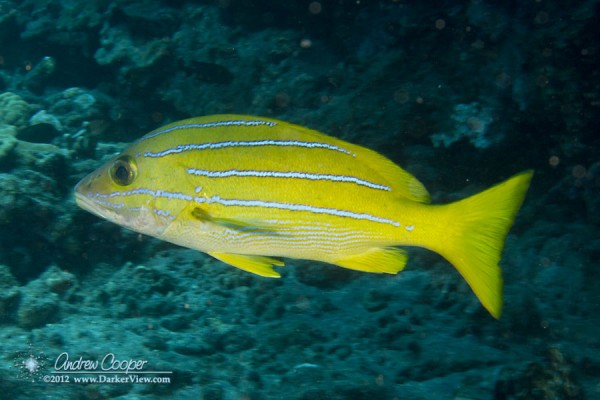
Category: Postcard from the Reef
Photos from the wet
Postcard from the Reef – Hydroid Stings
This is not a case of “I wish you were here”, but rather another lesson in the many hazards of diving.

I know when I got hit, a series of pricks down my left forearm. I didn’t even react, I was concentrating on the photo. I continued to brace myself against the surge by using the rocks of the cave floor. Those rocks were home to some little critters that had an issue with the disturbance I was creating… Hydroids.
Through the rest of the dive my arm continued to sting, discomfort that persisted but was not really all that bad. I took no action other than noting that I had gotten hit. It wasn’t until the next day that I realized that the stings were not going to go away quickly. I had a series of red welts across my forearm, and they itched. Time to break out the hydrocortisone cream. A week later the welts have faded and shrunk to pinpoints, no longer itch, but are still there.

Friday evening we stopped into the shop of Kohala Divers for a bit. There were a few folks we know in the shop as they were having an open house. As I chatted with Lina Preskitt, a local marine biologist, I mentioned the stings, showing her my forearm. She raised her forearm to display a very similar set of red welts on her left arm! We laughed as we looked at a mirror of almost identical stings.
This is the second time I have been seriously stung by hydroids. Will it stop me from diving? Not at all. Perhaps be a bit more careful when mucking about on a cave floor.
Postcard from the Reef – A Diving Weekend
No, I am not in the video, I didn’t get out Sunday. But I did dive Saturday and Monday with the folks who are in the video…
No diving this coming weekend as I am on-call. The following week? I expect we will be diving, perhaps at the same site shown in the video.
Postcard from the Reef – Keferstien’s Sea Cucumber
As I have discussed before, there are some weird critters on the reef. Some of the more alien appearing creatures are the sea cucumbers of the family Synaptidae, the thin-walled sea cucumbers. These look like large worms, moving across the reef by expanding and contracting their bodies. At the front end are a set of feeding tentacles, sweeping out in slow motion to move food to the mouth at the center. The body is flaccid, supported and given shape through an internal hydraulic system.
The small brown Keferstein’s sea cucumber is surprising sticky, with small hook-like spicules on its outer skin. It sticks readily to dive gear, twice now I have seen these critters stuck to a diver without the diver knowing. Carefully peeling them off they make a nice photographic subject before allowing these normally nocturnal critters to escape back into a crevice in the coral.

Postcard from the Reef – Lei Triggerfish
Postcard from the Reef – Cushion Star Underside
Postcard from the Reef – Cusk Eel
A secretive species, the cusk eels are seldom seen by divers on Hawaiian reefs. They shelter in caves and crevices during the day, emerging at night to forage. This eel was holed up in a shallow crevice low in a rock wall. I shot one half decent photo before it retreated further into the crevice, out of sight.
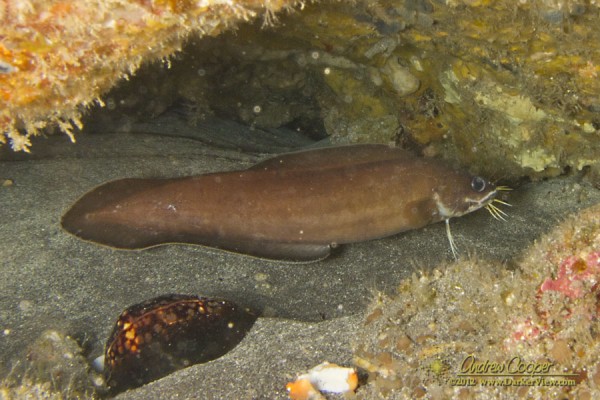
Postcard from the Reef – Bluestripe Snapper
Postcard from the Reef – Snaggletooth
The books says these guys grow to 3½ feet in length. Uh, right. This guy was at least six feet long, with a mouth big enough to slide my whole hand into. His scarred head and ragged fangs spoke of a lifetime of life and death struggle on the reef. The book also says that undulated morays are one of the meanest morays, cautioning not to feed or play with these eels. I had not read the book before the encounter, but I needed no warnings to give this fellow a good deal of respect.
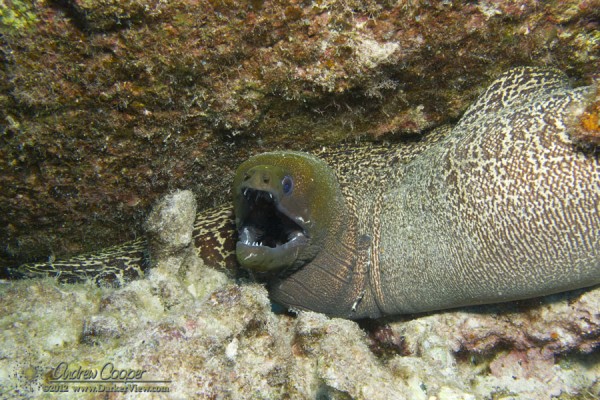
Postcard from the Reef – Sea Turtle
Turtle breathe air. When an air-breathing marine creature needs to sleep there is an interesting choice. It is easy to understand pulling up on a beach to sleep securely, without the waves and currents to worry about. Sea turtles also use another tactic, one harder to fathom, sleeping in the back of a cave 30ft below the waterline…


